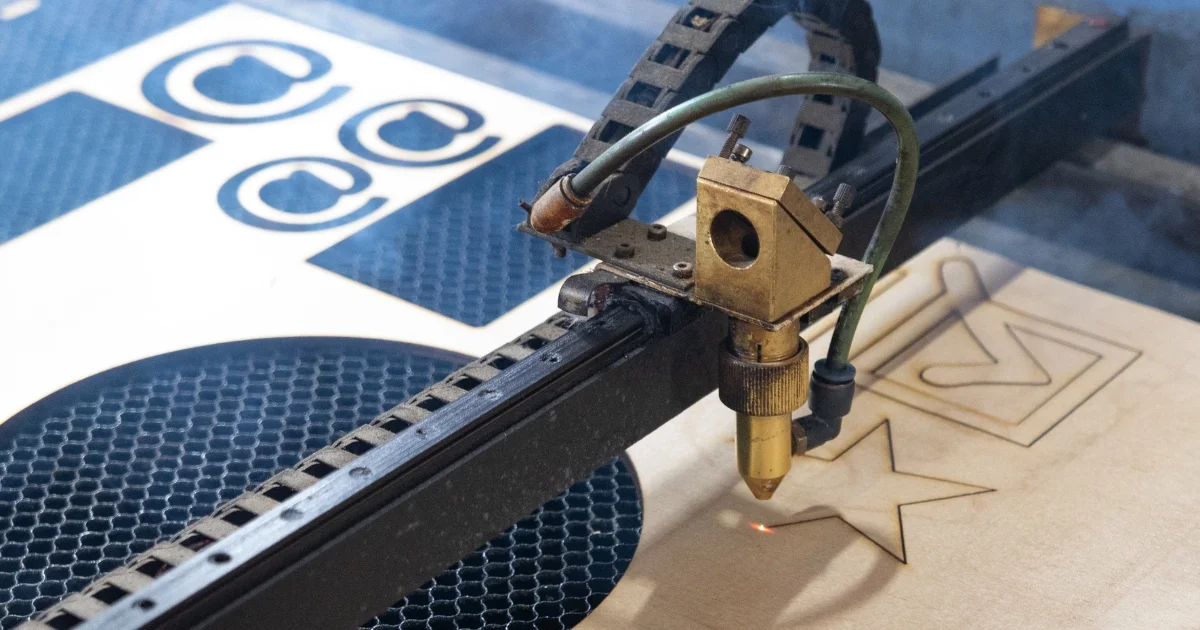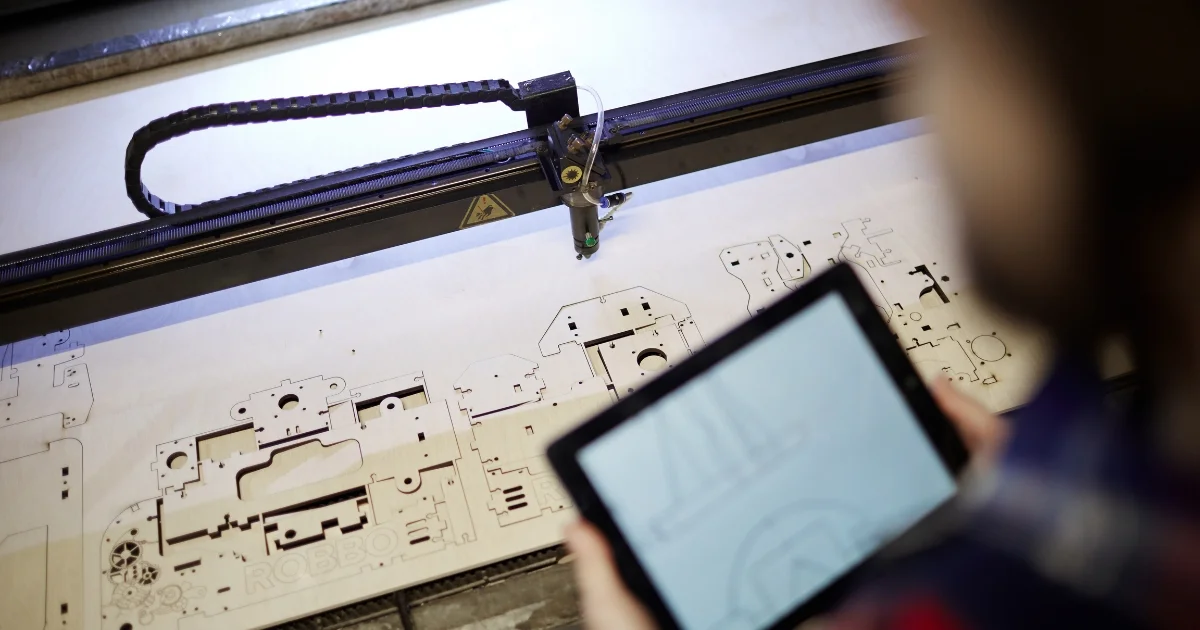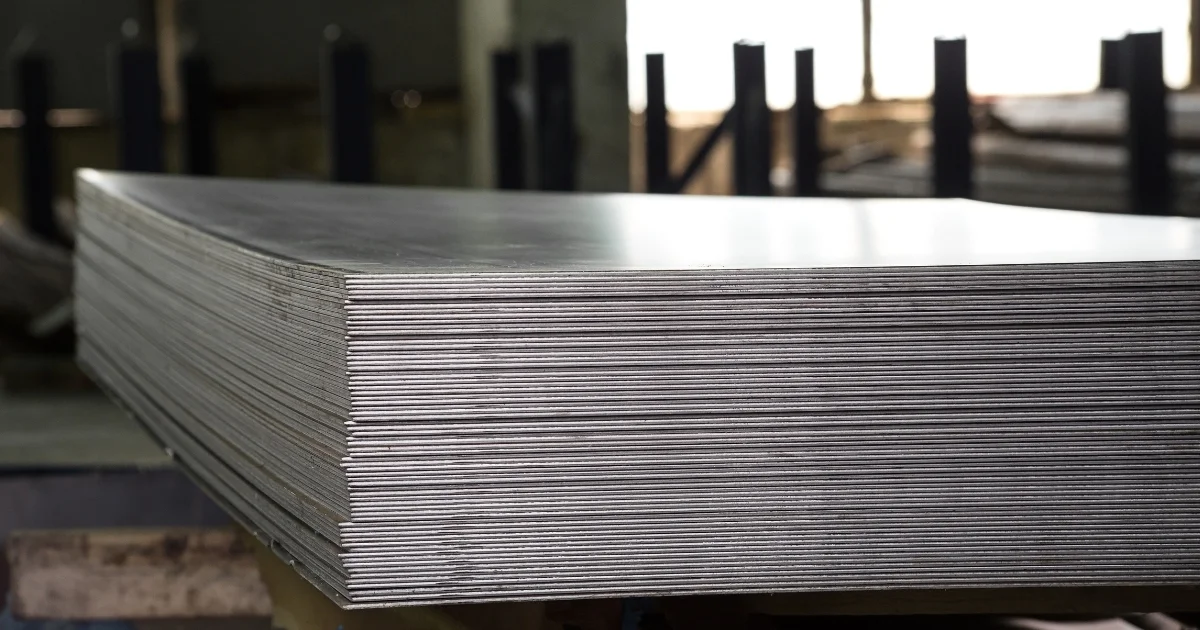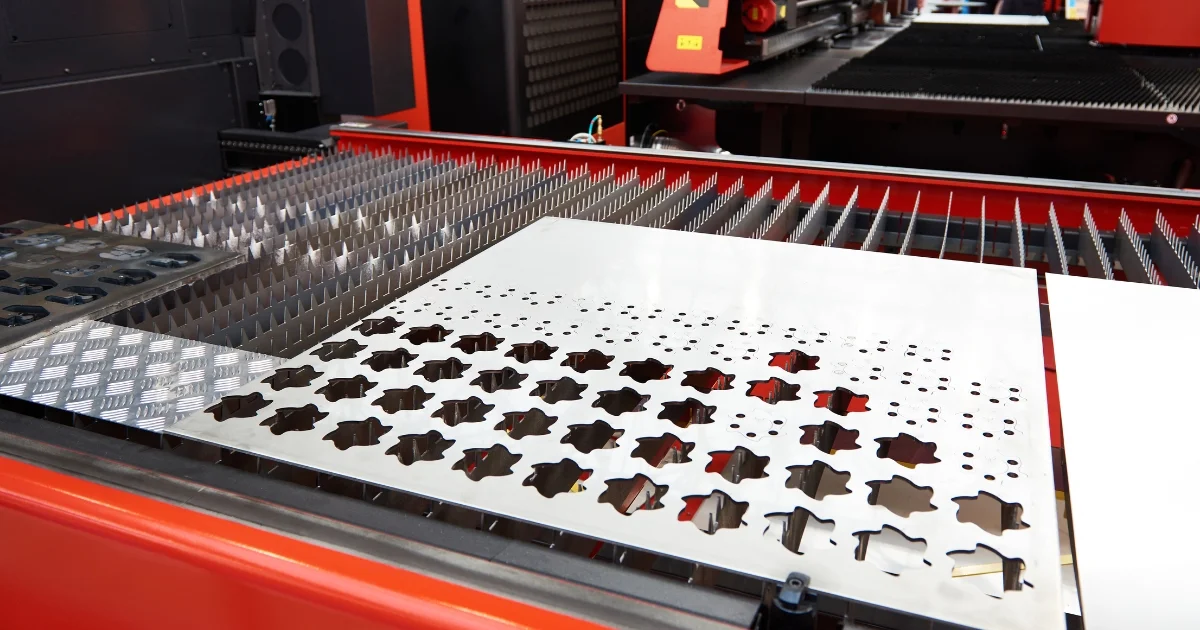
We collect basic website visitor information on this website and store it in cookies. We also utilize Google Analytics to track page view information to assist us in improving our website.
If you’re passionate about metal cutting or just keen to learn more, you’ve landed in the right place.
For over 38 years, Amber Steel has been at the forefront of metal cutting services, specializing in laser cutting, flame cutting, and plasma cutting. Our expertise has carved a niche in this cutting-edge industry, delivering precision and excellence across industrial projects big and small.
In our blog, we’ll share a mix of useful tips, innovative applications, our thoughts on sustainability in steel cutting, and more. Expect stories from the cutting floor, insights into how our processes can streamline projects across industries, and a few lessons we’ve learned along the way.
While we keep some of our trade secrets under wraps, this blog is designed to offer valuable nuggets of wisdom that you simply won't find anywhere else. Whether you’re a professional in the industry or someone fascinated by the possibilities of metal cutting, you'll find something of value here.
So, stick with us as we delve into the finer points of metal work. We’re glad to share our insights and lead discussions that matter to our industry.
How precision metal cutting propels the aerospace industry, from constructing lighter frames to enhancing aerodynamics.
The role of advanced metal cutting in automotive manufacturing, driving innovations in vehicle design and efficiency.
All about the robust and versatile process of flame cutting, ideal for tackling thicker metals with precision and ease.
Discover the art of crafting metal furniture, where cutting techniques meet design to create both functional and aesthetic pieces.
A behind-the-scenes look at the mechanics of metal cutting technologies and the science that makes them tick.
Laser cutting is where extreme precision meets efficiency, allowing for intricate designs and clean finishes.
The critical role of precise steel cutting in developing reliable and intricate medical devices.
How steel cutting supports the oil and gas industry with components that withstand extreme environments and pressures.
Known for its speed and versatility, plasma cutting slices through conductive metals with hot plasma.
Safety first! Tips and insights on maintaining a safe environment while handling powerful metal cutting equipment.
The backbone of construction, where steel fabrication and cutting technologies create frameworks that shape skylines.
Sustainability
A look at sustainability in metal cutting, focusing on practices that reduce waste and conserve energy to protect our planet.

In fabrication, the true cost of a mistake doesn’t always show up right away. A slightly uneven kerf or a cut edge just a bit off might seem minor, but once that part reaches assembly, the problem often grows.
Suddenly, you’re facing delays, rework, or even scrapped components. These aren’t small issues—they waste time, raise material costs, and disrupt every phase that follows. That’s why precision cutting matters.
When cuts are clean and consistent from the start, the rest of the process runs more smoothly. Parts fit the way they should, operators spend less time fixing mistakes, and timelines are easier to keep. Fewer surprises means fewer setbacks.
Smooth production helps avoid the ripple effect of delays that creep into forming, welding, finishing, or final assembly. The result is better labour efficiency, tighter cost control, and more predictable outcomes.
Rework doesn’t just add a few minutes—it sets off a chain reaction. A slightly off-spec part might need grinding, welding, or machining just to be usable. That pulls workers off primary tasks, delays other jobs, and consumes more material than expected.
These disruptions rarely happen in isolation. When parts don’t fit, production lines stall. Project managers scramble to adjust schedules or even halt assembly until replacements are cut. A single error quickly multiplies across the job.
For manufacturers, these fixes quietly reduce margins. They stretch timelines, use up labour, and sometimes lead to missed deliveries or rejected parts. It also affects morale, with skilled workers stuck fixing avoidable mistakes. Instead of building, they end up correcting.
That’s why more fabricators are making cutting accuracy a priority. Reducing variation at the start helps eliminate issues later. It’s a simple equation: better cuts lead to fewer problems.
Precision cutting isn’t just about having better equipment. It’s about using that equipment with accuracy and consistency. Standard machines can get the job done, but they often introduce variation. A slight burr, a wider kerf, or a misaligned feature can be enough to throw a part out of spec.
Precision setups minimize that risk. Whether it’s laser, plasma, or waterjet, the goal is consistent accuracy. These machines are calibrated to hold tight tolerances across both simple and complex cuts, even through long production runs.
That’s where the benefits add up. Clean edges, minimal burrs, and precise hole placement reduce scrap and simplify the next step. When parts move smoothly into welding, forming, or assembly, production stays on track.
Take a steel bracket headed for welding. If the holes are even slightly off, extra grinding or clamping might be needed just to make it fit. With precision cutting, that bracket arrives accurate and ready to install.
It’s not just about edge quality. It’s about cutting risk, saving time, and keeping the entire process moving efficiently.

When a part isn’t cut correctly, it sets off a chain reaction. Assembly slows down, welding becomes more difficult, and quality control ends up flagging issues that could have been avoided. Small errors early on can ripple through the entire job.
Cutting parts to spec from the beginning helps everything fit as intended. Welders focus on their actual work instead of fixing flaws. Assemblers spend less time realigning components. Teams avoid last-minute adjustments that throw off the schedule.
Precision cutting also makes the workspace safer. When operators don’t have to grind or fix edges, they’re exposed to fewer hazards like sparks, debris, and repetitive motion strain.
Material handling becomes easier, too. Clean, accurate cuts reduce sharp edges and help prevent warping, making parts safer to move through forming or finishing without damage. In short, better cuts lead to better flow.
It’s like building on a solid foundation. When the base is level and true, every step that follows runs more smoothly. Precision cutting sets that foundation from the very first move.
Choosing the right cutting process isn’t just about preference. It’s about matching the method to the performance requirements of the job.
Laser cutting delivers exceptional precision with clean lines and tight tolerances. It’s especially valuable for thin to medium materials used in industries like aerospace and medical devices, where consistency and edge quality are critical. With heat-affected zones as small as 0.1mm and tolerances down to ±0.003", laser systems provide excellent control for complex parts.
Plasma cutting is ideal when speed and cost-effectiveness are priorities. It works well with medium to thick materials, up to 1.250", commonly used in construction, mining equipment, and industrial machinery. Modern high-definition systems can hold tolerances around ±0.040", making plasma a strong choice for large-scale projects that demand both speed and accuracy.
Flame cutting remains the most practical option for very thick steel plate, from 2" up to 12". It’s commonly used for structural steel, shipbuilding, and oil and gas components. Although the heat-affected zone is wider than with other methods, careful control helps maintain cut quality and reduce distortion, even on large profiles.
Each cutting method has specific advantages. The key is selecting the one that aligns with the material type, thickness, and overall fabrication goals.
It’s one thing to cut a part accurately. It’s another to design that part in a way that makes precise cutting possible in the first place.
That’s where Design for Manufacturability (DFM) comes into play. When engineers plan for the cutting process from the start, instead of after the fact, it helps prevent the issues that often lead to delays or rework.
Here are a few simple but critical strategies:
Avoid tight internal corners that are difficult to machine or cut cleanly.
Space holes and features far enough apart to reduce the risk of distortion.
Account for kerf width, especially when transitioning between laser, plasma, or flame cutting methods.
Take a steel gusset plate, for example. A sharp 90-degree internal corner might seem like a clean solution on paper, but in reality, it creates stress concentrations and cutting challenges. Adding even a small radius, such as 0.125", can reduce risk and extend the lifespan of the part.
Today’s precision cutting is no longer just mechanical. It’s becoming increasingly intelligent. Modern monitoring systems now track cut quality in real time, alerting operators to potential issues like overheating, nozzle degradation, or inconsistent speeds. These alerts help catch problems early, before they impact entire production runs.
Artificial intelligence is taking this a step further. AI-driven platforms automatically adjust cutting parameters based on live data, fine-tuning speed, power, and gas pressure to maintain consistent quality, even when material properties fluctuate.
This kind of automation is especially valuable in high-stakes industries like aerospace, where even one rejected part can cost thousands. Manufacturers using AI-driven tools have seen up to 40% gains in overall efficiency, helping reduce delays, improve precision, and minimize costly errors.
And this technology is no longer reserved for large-scale operations. As prices fall and software improves, smaller fabrication shops are beginning to adopt these tools as well. The result is more consistent outcomes and fewer production issues—without the need for oversized budgets or dedicated automation teams.
Not every part demands ultra-tight tolerances, but when precision matters, there’s no substitute for a clean, accurate cut.
Precision cutting services are especially valuable in projects where:
The material is costly, rare, or difficult to replace
The part requires tight fit-up or minimal weld prep
The application involves regulated standards or traceability
The timeline is tight, and mistakes come with high penalties
Industries like defense, electronics, medical, and transportation often fall into this category. In these environments, even a small dimensional error can cause major setbacks—or worse, complete part rejection.
Precision cutting helps eliminate that risk. It improves part quality, reduces scrap, and keeps teams focused on progress rather than corrections. When you know your parts will arrive ready to assemble, there’s no need to pad your schedule or overcompensate in later stages. You can move forward with confidence.
When the cost of a bad part is high, a well-cut one becomes far more than a line item. In these cases, precision is not an upgrade—it’s a requirement.
Cutting may happen early in fabrication, but it affects every step that follows. If the cut is off, delays spread quickly. If it’s clean and accurate, the rest of the job stays on track.
That’s why cutting accuracy is one of the smartest places to invest. It reduces downstream problems, protects your schedule, and keeps production focused on building—not correcting mistakes.
In high-pressure environments with tight deadlines, costly materials, or complex assemblies, there’s no room for error. Precision cutting services from the start help prevent problems before they begin.
Need precision without the rework? Contact us to request a quote or talk to a fabrication expert about your next project. Our team delivers clean, consistent cuts tailored to your specs—every time.

Warped parts don't just slow things down. They throw off tolerances, misalign assemblies, and create a ripple effect of rework across production lines – especially when parts are stacked or welded.
Thermal cutting often causes distortion, especially when too much heat is applied too slowly. The more heat a process introduces, and the longer it lingers, the more likely it is that edges will lift or surfaces will shift. This is especially true for thin-gauge metals, unsupported cuts, or parts with tight dimensional tolerances.
Laser cutting distortion is significantly lower than what's seen in plasma or oxy-fuel processes. With its concentrated beam and fast travel speed, laser systems reduce the heat-affected zone and control thermal stress more precisely. The result is cleaner cuts and flatter parts, without adding post-processing time.
In this post you'll discover how distortion happens during cutting, what makes laser systems better at controlling it, and when it makes sense to prioritize flatness over cutting speed.
Distortion is one of the most common challenges in thermal cutting. When heat is applied to metal, the material expands unevenly. Hot zones grow while surrounding areas remain cooler. As the part cools, internal stresses form, which can lead to visible warping or more subtle dimensional shifts.
The more heat a cutting process introduces, the higher the risk. Plasma and oxy-fuel systems create wide heat-affected zones that increase the chance of thermal stress. Slow travel speeds or long dwell times only make the problem worse.
Several factors influence the severity of warping:
Material thickness variance
Heat distribution patterns
Cooling rate differences
Residual material stress
Cut path sequencing
Thin sheet metal and complex part geometries are especially prone to deformation. Even slight movement can affect flatness, edge precision, or downstream assembly. In high-volume environments, these issues lead to added labour, delays, and rework.
Understanding how different cutting methods handle heat is essential. It's important both for making clean cuts and keeping parts stable and production predictable from start to finish.

Laser cutting has a clear edge when part flatness matters. The process uses a tightly focused beam that applies heat to a very small area. Because the beam moves quickly and doesn't linger, the metal doesn't have time to build up the kind of stress that leads to warping.
Modern 6,000W and 10,000W fiber lasers create beams measuring just 100-150 microns in diameter – thinner than a human hair. This precision means heat affects only the immediate cut area rather than spreading throughout the workpiece. The result is a dramatically reduced heat-affected zone (often up to 80% smaller than plasma or flame cutting), which keeps parts stable and minimizes edge deformation during cooling.
Unlike plasma or oxy-fuel, which create wide heat-affected zones, laser systems introduce less total heat. That smaller footprint means less expansion during the cut and less contraction during cooling. Parts stay flatter, and the overall shape holds up better.
The concentrated energy also means faster cutting speeds, giving heat less time to disperse through the material. When cutting 16 mm steel, a high-powered fiber laser slices through at speeds up to 10x faster than flame cutting, significantly reducing the heat's dwell time.
Today's fiber laser systems don't just cut blindly. They incorporate sophisticated features that further minimize distortion:
Variable pulse technology adjusts the beam's energy profile based on material characteristics
Adaptive focus control adjusts the focal point during cutting to maintain optimal energy distribution
Process monitoring systems make real-time adjustments to prevent heat buildup
These automated systems constantly adjust cutting parameters in real time to maintain the ideal balance between speed, power, and heat, even on complex geometries or multi-pass cuts.
This is especially important when working with thinner materials, precision brackets, or components that need to stay square and level. Laser cutting distortion tends to stay within tighter tolerances, which helps avoid surprises later, whether you're stacking, welding, or aligning parts in a jig.
In high-precision manufacturing, part flatness can be critical. For example, in automotive subassemblies, a single warped bracket can throw off an entire alignment jig, forcing manual correction and risking misalignment in welds or fastener placement.
Even small distortions can cause problems during assembly or final checks. Parts that don't sit flush, align properly, or meet tolerance specs add time, labour, and risk, and often require costly secondary machining to correct. As The Fabricator points out, good part levelling makes fabrication predictable, especially when flatness impacts every step downstream.
This matters most when parts are welded, bolted, or stacked as part of a larger system. A slight bow or twist can throw off hole alignment, cause gaps in weld joints, or create stress points that reduce structural integrity. In automated environments, that kind of variation can stop production altogether.
Laser cutting helps avoid these issues by producing consistently flat parts from the start. With tighter control overheat input and cleaner edges, laser-cut components reduce the need for secondary processes like straightening or machining. That saves time and preserves dimensional accuracy throughout the build.
When tolerances are tight, flatness becomes part of the spec. Laser systems are built to meet that need, especially in industries where part consistency is tied directly to performance and safety.
Laser cutting isn't a one-size-fits-all process, especially when distortion prevention is a priority. Different materials require specific approaches.
For mild steel, modern fiber lasers operate comfortably across thicknesses from 0.5 mm to 25.4 mm with minimal warping. The key lies in adjusting assist gas type and pressure based on thickness. Nitrogen assist gas works exceptionally well for thinner materials, while oxygen provides better heat control for thicker sections.
Mild steel is one of the most common choices. It holds up well under focused heat and delivers sharp, consistent edges. Stainless also cuts clean, and its stability makes it a good option when flatness matters.
Stainless steel presents unique challenges due to its lower thermal conductivity, which causes heat to linger near the cut zone. This can increase distortion, especially in thin sheet applications or intricate geometries. Laser systems with real-time monitoring help avoid hot spots by adjusting the beam dynamically as cutting conditions change.
Heat tends to concentrate rather than dissipate, increasing warping risk. For stainless applications, reducing power while increasing speed often yields better results than maximum power settings.
Aluminum's high thermal conductivity and reflectivity make it particularly challenging. The material quickly spreads heat beyond the cut zone while simultaneously reflecting a portion of the laser energy. These properties can lead to unpredictable distortion patterns if not properly managed with speed, power, and gas optimization.
Current best practices for aluminum involve:
Higher cutting speeds with moderate power settings
Specialized assist gas mixtures
Strategic cut path planning that minimizes heat accumulation
Most distortion issues show up when the material is too thin, unsupported, or cut too slowly. That's where process control and smart part layout come into play. The right equipment (and the right operator) can make a big difference in how the material behaves during and after the cut.
Distortion isn't only about the cutting beam, but also about how the job is planned. Smart nesting software plays a big role in minimizing heat buildup across the sheet. By arranging parts to reduce torch movement and avoid heat stacking, modern systems help maintain both material stability and overall flatness.
The order and direction of cuts significantly impact warping potential. Cutting from the inside out allows interior features to be removed before outer contours, reducing stress during the cutting process. Similarly, alternating between different areas of the workpiece prevents localized heat buildup.
Nesting software can identify shared edges, reduce torch lift time, and space parts to avoid heat stacking, which is especially important when working with thin sheet metal or aluminum. It also optimizes spacing and adjusts for part geometry to keep heat input balanced. That means the torch doesn’t dwell too long in one area or cut in a way that builds up thermal stress. These small adjustments add up fast, especially in high-mix, high-volume production environments with demanding tolerances.
Modern nesting software can analyze parts and automatically generate cutting sequences that minimize thermal stress. These programs consider factors like material thickness, geometry complexity, and proximity of features to calculate the optimal path.
Proper material support plays a crucial role in distortion prevention. Slat designs with minimal contact points reduce heat transfer, support part stability, and prevent distortion from uneven cooling. Some advanced systems incorporate programmable support pins that adjust based on part geometry.
For particularly distortion-prone applications, vacuum tables can hold material firmly during cutting while allowing even cooling across the surface. This additional stabilization becomes crucial when working with thin sheets that are especially susceptible to thermal stress.
Keeping parts flat and within specification doesn't happen by accident. It requires deep understanding of how heat affects different materials combined with strategic use of modern laser cutting capabilities.
The newest generation of fiber laser systems brings unprecedented control over the cutting process. With features like auto-focus, real-time monitoring, and smart path planning, modern fiber lasers deliver distortion-free parts, even on thin metals, intricate designs, or stacked assemblies.
Struggling with warped parts or rework delays? Let’s cut the distortion. Fiber laser cutting can keep your parts flat, fast, and ready for final assembly – without extra post-processing.